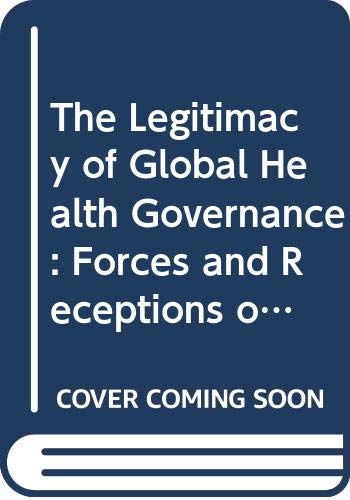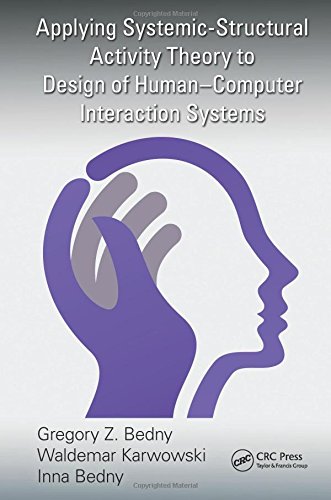
Geometric tools for computer graphics
by Philip J SchneiderDo you spend too much time creating the building blocks of your graphics applications or finding and correcting errors? Geometric Tools for Computer Graphics is an extensive, conveniently organized collection of proven solutions to fundamental problems that you'd rather not solve over and over again, including building primitives, distance calculation, approximation, containment, decomposition, intersection determination, separation, and more.
If you have a mathematics degree, this book will save you time and trouble.
If you don't, it will help you achieve things you may feel are out of your reach.
Inside, each problem is clearly stated and diagrammed, and the fully detailed solutions are presented in easy-to-understand pseudocode.
You also get the mathematics and geometry background needed to make optimal use of the solutions, as well as an abundance of reference material contained in a series of appendices.
Features Filled with robust, thoroughly tested solutions that will save you time and help you avoid costly errors.
Covers problems relevant for both 2D and 3D graphics programming.
Presents each problem and solution in stand-alone form allowing you the option of reading only those entries that matter to you.
Provides the math and geometry background you need to understand the solutions and put them to work.
Clearly diagrams each problem and presents solutions in easy-to-understand pseudocode.
Resources associated with the book are available at the companion Web site www.
com/gtcg.
- Format
- 1009 pages, Hardcover
- First published
- 2003
- Publishers
- Morgan Kaufmann
- Subjects
- Computer graphics·Geometric programming
- Language
- English
Many of Mr. Eberly's books leave me dazed and confused.
I have owned this text for some time and I find it very informative as it covers a great deal of subjects. A review of the table of contents will give an indication of the material covered.
This book is used to implement geometric algorithms. The authors present both coordinate-free (which they favour) and coordinate-based approaches to geometry, and there is plenty of intuitive motivation.
Books

Mi vida como hombre
Philip Roth
At its heart lies the marriage of peter and maureen tarnopol, a gifted young writer and the woman who wants to be his muse but who instead is his nemesis.

Ubik
Philip Dick

ABANDONED Epic! : Scientists ABN Epic!
Steele, Philip

Lollipop
Philip Carlo

John Lennon
Philip Norman
For more than a quarter century, biographer philip norman's internationally bestselling shout!

Organizing Christmas
Philip Hancock
Organizing christmas is an exploration of the organizational character of christmas.

Do Androids Dream of Electric Sheep?
Philip Dick
Inspiration for the classic film blade runner and the upcoming sequel, blade runner 2, in theaters fall 2017 nominated for the nebula award "the most consistently brilliant science fiction writer in the world.

Introduction to Political Theory
Philip Wittman

Bernie Gunther 16 - Export/Airside/ROI
Philip Kerr

Bernie Gunther 15 - Export
Philip Kerr

Bernie Gunther 16
Philip Kerr

Bernie Gunther 16
Philip Kerr

Bernie Gunther 15
Philip Kerr

Bernie Gunther 15
Philip Kerr

Bernie Gunther 15 - Export/Airside/ROI
Philip Kerr

Putney Through Time
Philip Evison
This attractive london suburb is known from many references in popular culture, frequent appearances on film and television and, of course, as the starting point of the oxford & cambridge boat race.

How Navies Win Wars
Philip Grove
This fascinating book analyzes naval battles from the roman world to the present day to show how naval power made the difference in winning some of the most famous battles and wars in history.

Michel Foucault : Die Ordnung der Dinge
Ulrich Johannes Schneider
In this series the most important works in the history of philosophy are discussed with cooperative commentary from internationally renowned philosophers.

Michel Foucault
Ulrich Johannes Schneider
In der von otfried h�ffe herausgegebenen reihe klassiker auslegen werden die bedeutendsten werke der philosophiegeschichte in form kooperativer kommentare von international renommierten philosophen entschl�sselt und kommentiert.

Michel Foucault : Die Ordnung der Dinge
Ulrich Johannes Schneider
In this series the most important works in the history of philosophy are discussed with cooperative commentary from internationally renowned philosophers.

Developing World : Turkey and Istanb Developing World
Steele, Philip

Transfer Pricing
Philip W. Carmichael

Legitimacy of Global Health Governance
Carmen Huckel Schneider
The legitimacy of global health governance examines organisations which deal with global health governance, differing from intergovernmental organisations such as the who.

Transfer Pricing
Philip W. Carmichael

Transfer Pricing
Philip W. Carmichael

Transfer Pricing
Philip W. Carmichael

Urban Landscape Priorities, Opportunities and Prospect
Philip N. Pregill

Soul-Error
Philip Weinstein

Urban Landscape Priorities, Opportunities and Prospect
Philip N. Pregill

Gas Chromatography/Infra-Red Spectroscopy
John F. Schneider
The book explains the intricacies of interfacing a gas chromatograph with an infrared spectrometer.

Gas Chromatography/Infra-Red Spectroscopy
John F. Schneider
The book explains the intricacies of interfacing a gas chromatograph with an infrared spectrometer.

Advances in Quantum Chemistry
Philip E. Hoggan

Encyclopedia of Toxicology, Fourth Edition
Philip Wexler

The First Ten Years
Newton, Philip, Sr.

World Civilizations
Philip J. Adler
World civilizations offers students a comprehensive and balanced overview of the world's major civilizations, spanning from the ancient world to modern times.

Two Storm Wood
Philip Gray

South Africa's Multilateral Diplomacy and Global Change : the Limits of Reformism
Philip Nel
This title was first published in 2001.

Sacred Landscapes and Cultural Politics
Philip P. Arnold

Return of Resentment
Robert A. Schneider

North Carolina in The 1950s
Philip Gerard

Performance Capture
Philip Organ
This volume explores the practicalities of how motion capture technology can be used creatively, beyond mere replication of live action.

Having the Race Conversation
Philip Jacobs

Wirtschaftskriminologie
Hendrik Schneider
In conjuncture with the debate on corporate governance and compliance, the questions surrounding the causes of white collar-crime and the possibilities of preventing such in companies have become increasingly important.

2 Corinthians
Philip Esler

Modern Law of Forfeiture
Philip Larkin
This book traces the evolution of the rule of forfeiture in the uk and other common law countries (australia/nz/canada) alongside the development of the us public policy doctrine.

Advanced Bioscience Laboratory Techniques
Philip P. Bonner

Introduction to Geophysical Exploration
Philip Kearey

Cognitive Architecture
Philip Robbins

Aftermath
Philip Bump

Roman Art of War in Late Antiquity
Philip R. Rance

Untitled Nathan Sutherland 7
Philip Gwynne Jones

Lfa
Philip Best

Best Easy Day Hikes Canyonlands and Arches National Parks
Bill Schneider
Fully updated and revised, this edition includes trail descriptions and maps of the author's favorite short hikes in canyonlands and arches national parks.

Best Easy Day Hikes Absaroka-Beartooth Wilderness
Bill Schneider
This thoroughly revised, expanded, and updated edition of best easy day hikes beartooths guides readers to the best day hiking opportunities in the beartooth and absaroka ranges of montana, north and east of yellowstone national park.

Islamic Theology in the Turkish Republic
Philip Dorroll
Philip dorroll argues that turkish islamic theology is in fact a distinct tradition of islamic theological thought, shaped by the unique social conditions of the turkish republic.
Similar books

Atkins Enterprise Networks
Atkins, John

.NET Internals and Advanced Debugging Techniques
Mario Hewardt

Sams Teach Yourself jQuery in 24 Hours
Julie C. Meloni

Linux Threads Programming
Ulrich Drepper

SQL Server 2012 T-SQL Programming Unleashed
David Solomon

Core JavaServer Faces
David Geary
Javaserver faces allows developers to write server-side applications without worrying about the complexities of dealing with browsers and web servers.

Sams Teach Yourself Flash Professional CS5 in 24 Hours
Phillip Kerman
This is a flash tutorial, revised to teach the latest version of adobe flash cs5 through 24 one-hour lessons.

Designing Dynamic Java Applications with OSGi
Valery Abu-Eid
The complete best-practice guide to designing and implementing highly dynamic, robust, and reliable java ebterprise applications with osgi..

Official VCAP5-DCA Cert Guide
Cody Bunch

Power Postgresql
Joe Conway

VMware Network Virtualization
Thomas Kraus

Vcp5-Dcv Lab Booklet
Thomas Trevethan

Advanced Oracle Solaris 11 System Administration
Bill Calkins

MVVM Unleashed
Michael Brown

Programming in Swift
Stephen G. Kochan

Disaster Recovery Planning
Jon William Toigo

Managing Performance and Capacity
David Collier-Brown

Creating Motion Graphics with after Effects
Chris Meyer
Trish and chris meyer and lee lanier share over 20 years of hard-earned, real-world film and video production experience inside the sixth edition of this critically-acclaimed text.

Practical Privacy Enhancement Technologies
Shishir Nagaraja
This book is an introductory text to privacy and traffic analysis, a very important aspect of network security.

Animation Careers
Jan Nagel

Games People Play
Iain Donald

Scalable Algorithms
Vassil Alexandrov
Novel scalable scientific algorithms are needed to enable key science applications and to exploit the computational power of largescale systems.

Study Guide for TOGAF 9. 1 Certifications
B. V. Kumar

HIPAA and PCI Audits
Raj Goel

Inter Domain Routing Security
Marcelo Yannuzzi
Inter-domain routing security is a big actor in end-to-end network connectivity.

Visual Storytelling with Color and Light
Michael Humphries
Though digital technology will continue to advance the way art is created, traditional mediums and techniques will remain fundamental to creating art.

Blender Foundations
Alan Thorn

Overdispersion
David Fletcher
In the frequentist framework, a quasi-likelihood approach has long been used as a means of allowing for overdispersion, a common occurrence in many areas of scientific research.

Wireless Network Security
Jack L. Burbank

Wireless Network Security
Jack L. Burbank

Applying Systemic-Structural Activity Theory to Design of Human-Computer Interaction Systems
Gregory Z. Bedny
Human-computer interaction (hci) is no longer limited to trained software users.

Mental Ray My Way
Lee Wylde

Ray Tracing from the Ground up, Second Edition
Kevin Suffern
Recently, there has been a resurgent interest in ray tracing due to the capability of the gpu.

Introduction to Software Development
Craig Tidwell

Extraordinarily Badass Agile Coaching
Robert Galen

Mastering Django
Nigel George
Mastering django is the latest version of mastering django: core-the original, best-selling programmer's reference for django.

Affinity Publisher for Basic Book Covers
M. L. Humphrey

Database Design Succinctly
Joseph D. Booth

Handbook of Real-Time Computing
Yuchu Tian
The aim of this handbook is to summarize the recent rapidly developed real-time computing technologies, from theories to applications.

Autodesk Inventor 2023 : Advanced Part Modeling
ASCENT - Center for Technical Knowledge

DNSSEC Mastery
Michael W. Lucas

Mastering IBM I Security
Carol Woodbury

Business Analysis and Process Modeling Guidebook
Ahmed Hussein

Introduction to Software Development
Steven Zimmerman

Php : This Book Includes
Andy Vickler

Autodesk Civil 3D 2022 : Fundamentals for Grading Optimization
ASCENT - Center for Technical Knowledge

SwiftUI Essentials - iOS 15 Edition
Neil Smyth

Data Structures & Algorithms in Dart
raywenderlich Tutorial Team

IPhone 13 User Guide for Seniors
Willie Anne Candy

Advanced IOS App Architecture
raywenderlich Tutorial Team

Elementary Introduction to the Wolfram Language
Stephen Wolfram

Mac OS X Troubleshooting
Matt Washchuk

Computational System Design in R
Brian Rowe

Gouvernance Non Intrusive des Données
Robert Seiner

